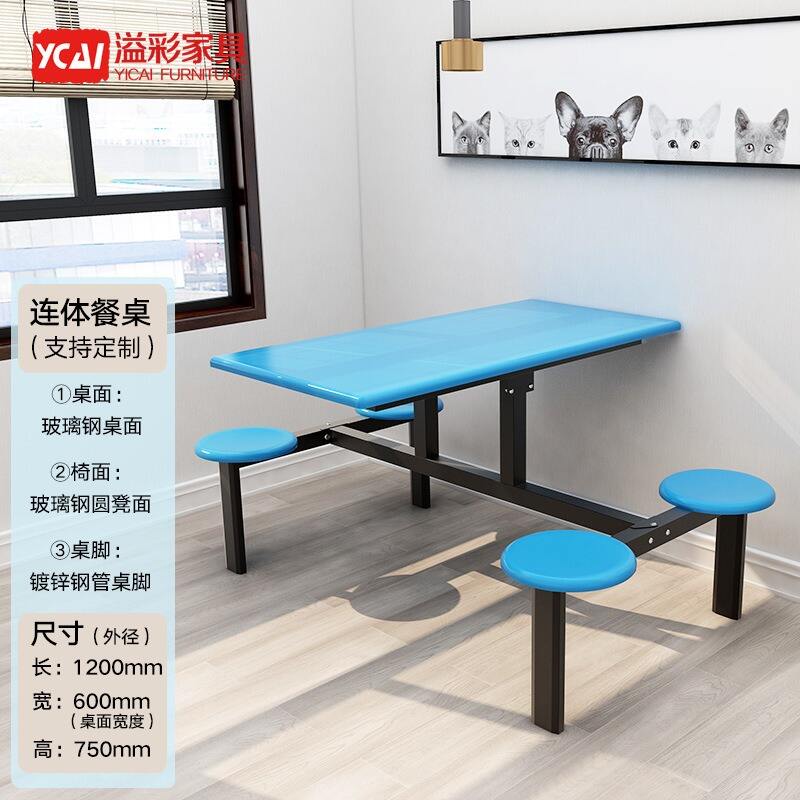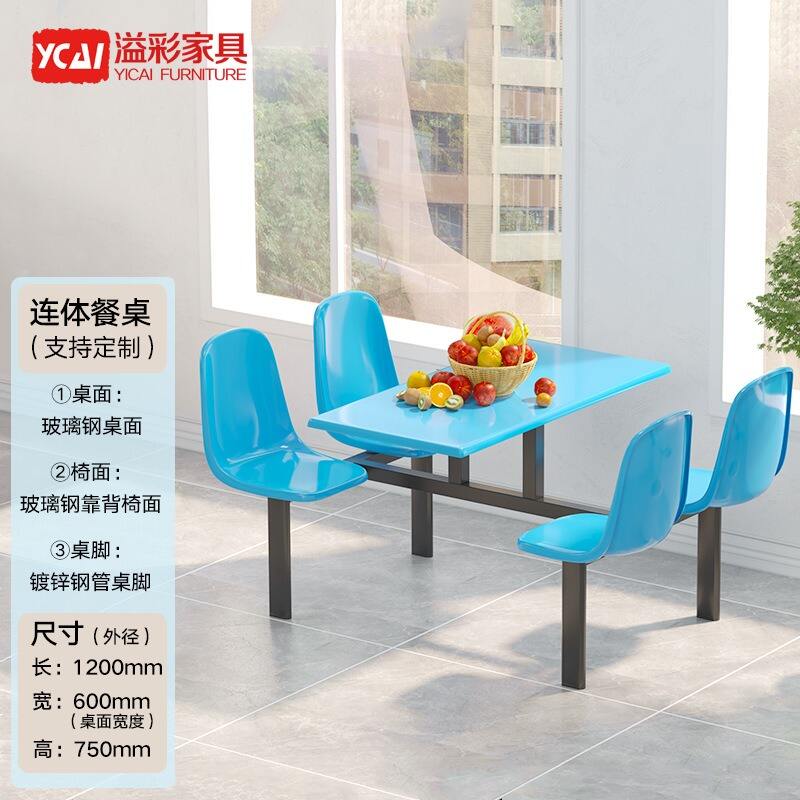عوامل کلیدی که هنگام خرید یک میز ناهار خوری برای یک اتاق ناهار خوری رسمی باید در نظر بگیرید
یک اتاق غذاخوری رسمی به عنوان یک فضای برای مناسبت های خاص، تجمعات و وعده های غذایی زیبا، ساخت میز غذا مرکز طراحی آن را قرار داد. انتخاب درست میز غذا برای چنین اتاقی نیاز به تعادل سبک، عملکرد و دوام دارد. برخلاف مجموعه های ناهار خوری معمولی، مجموعه های رسمی باید در حالی که نیازهای عملی را برآورده می کنند، نفاست را به خود جلب کنند. بیایید عوامل کلیدی را که باید در نظر بگیریم را بررسی کنیم تا مطمئن شویم که میز ناهار خوری شما اتاق ناهار خوری رسمی شما را افزایش می دهد.
۱. اندازه و تناسب: متناسب با اتاق
قدم اول اطمینان از این است که میز ناهارخوری به راحتی در اتاق ناهارخوری شما جا شود. یک میز بزرگ میتواند باعث شود اتاق کوچک به نظر برسد، در حالی که یک میز کوچک به نظر نامناسب خواهد آمد.
- اندازهگیری اتاق : حداقل ۳۶ اینچ (۹۱ سانتیمتر) فضا را بین میز ناهارخوری و دیوار یا مبلمان دیگر (مانند بوفه) رها کنید. این امر به افراد اجازه میدهد تا صندلیها را به راحتی بیرون بکشند و در اتاق حرکت کنند. به عنوان مثال، یک اتاق ۱۲ در ۱۴ فوتی میتواند به راحتی یک میز ناهارخوری ۶ فوتی را در خود جا دهد، در حالی که یک اتاق کوچکتر به ابعاد ۱۰ در ۱۲ فوت بهتر است با یک میز ۴ فوتی کار کند.
- گنجایش نشیمن : تعداد افرادی را که به طور منظم دعوت میکنید در نظر بگیرید. یک میز ناهارخوری ۶ نفره استاندارد است، اما اگر اغلب ۸ تا ۱۰ مهمان دارید، یک میز ۸ نفره یا بزرگتر مناسبتر است. میزهای قابل گسترش (با برگهای قابل جدا کردن) یک انتخاب هوشمندانه هستند — آنها برای استفاده روزانه ظاهری باریک دارند اما برای رویدادهای بزرگ قابل گسترش هستند.
- شکل میز اهمیت دارد : میزهای گرد یا بیضی شکل فضای رسمی را نرم میکنند و باعث تشویق به گفتگو میشوند، در حالی که میزهای مستطیلی یا مربعی ساختار بیشتری به فضا میدهند. میزهای مستطیلی برای اتاقهای بلند و باریک مناسبترند، در حالی که میزهای گرد در فضاهای مربعی عملکرد بهتری دارند.
2. سبک و زیبایی: هماهنگی با فضای اتاق
یک اتاق پذیرایی رسمی اغلب طرح منسجمی دارد (مثلاً سنتی، مدرن یا کلاسیک)، و میز ناهارخوری باید بهخوبی با این سبک هماهنگ شود.
- هماهنگ کردن با موضوع اتاق : برای یک اتاق رسمی سنتی (با گچبری، لوسترهای آویزان یا کفهای چوبی تیره)، میز ناهارخوری با پایههای حکاکیشده، روکش چوب غنی (مانند ماهوگنی یا گیلاس) و جزئیات تزئینی مناسب است. برای یک فضای رسمی مدرن (با خطوط روان، رنگهای خنثی)، یک میز ناهارخوری حداقلی با سطح شیشهای یا مرمری و پایههای فلزی مناسبتر است.
- هماهنگی با دیگر مبلمان : میز ناهارخوری باید با سایر قطعات اتاق هماهنگ باشد، مانند یک بوفه، کابینت یا سایدبورد. به عنوان مثال، اگر بوفه شما دارای قطعات برنجی است، یک میز ناهارخوری با تزئینات برنجی (روی پاها یا لبهها) هماهنگی لازم را ایجاد میکند.
- پالیت رنگ : به یک طرح رنگی رسمی پایبند باشیددرخشش های عمیق (خره، بلوط) ، نطفه های خنثی (سنگ، خاکستری) یا رنگ های غنی (سنگ آبی، زمرد). از رنگ های روشن و غیر عادی که با ظرافت اتاق در تضاد هستند اجتناب کنید. برای مثال، میز ناهار خوری چوبی تیره، گرما و رسمیتی را به اتاقی که دیوارهای آن روشن است، می افزاید.
3. جنس و دوام: زیبایی با دوام
ستهای میز ناهارخوری فرمایی سرمایهگذاری هستند، بنابراین موادی را انتخاب کنید که هم زیبا باشند و هم دوام بیاورند.
- چوب : چوب صلب (بلوط، اهلی، ماهوگنی) یک انتخاب کلاسیک است. این ماده محکم است، با گذشت زمان خوب پیر میشود و در صورت خراشیدگی قابل رنگآمیزی مجدد است. چوب روکشدار (یک لایه نازک چوب با کیفیت بالا روی یک پایه) ارزانتر است اما همچنان ظاهری شیک دارد - فقط مطمئن شوید که روکش به اندازه کافی ضخیم است تا در برابر سایش مقاومت کند.
- مرمر یا سنگ : یک میز ناهارخوری با سطح مرمری لاکس و لوکس بودن را به یک اتاق فرمی میدهد. این ماده مقاوم در برابر گرما است و ظاهری چشمگیر دارد، هرچند اینکه ممکن است لکهدار شود (از زیرپوش استفاده کنید) و سنگین است. سنگ مهندسی شده (مانند کوارتز) یک جایگزین عملی است - مقاوم در برابر لکه و شبیه به مرمر است.
- شیشه : یک میز ناهارخوری شیشهای تقویت شده حس مدرن و هوایی ایجاد میکند. تمیز کردن آن آسان است اما اثر انگشت را نشان میدهد، بنابراین بهتر است در صورتی که تمایل به تمیز کردن مکرر دارید استفاده کنید. آن را با پایههای فلزی یا چوبی برای ایجاد زیبایی بیشتر ترکیب کنید.
از مواد ارزان (مانند تخته ذراتی) که به راحتی تاب میخورند یا خراشیده میشوند پرهیز کنید - آنها در برابر فرسایش شدید ناشی از شامهای فرمی و مناسبتهای خاص مقاومت نمیکنند.

4. عملکرد: عملکرد بدون قربانی کردن سبک
حتی مجموعههای میز ناهارخوری فرمی هم باید کاربردی باشند. به دنبال ویژگیهایی باشید که میزبانی را بدون از بین بردن ظاهر زیبا، آسانتر کنند.
- برگهای قابل گسترش : بسیاری از میزهای شالودهای رسمی دارای برگهای پنهانی هستند که میتوانند بیرون کشیده شوند تا میهمانهای بیشتری را ساکن کنند. به عنوان مثال، یک میز ۶ نفره میتواند گسترش یافته و ۱۰ نفره شود، که آن را برای تعطیلات یا مهمانیها مناسب میکند. برگهایی را انتخاب کنید که با پایان کار میز هماهنگ باشند تا ظاهر یکپارچه حفظ شود.
- نگهداری ساده : وعدههای غذایی رسمی اغلب با ریختن مایعات (شراب، سس) همراه است، بنابراین سطح میز غذاخوری را انتخاب کنید که تمیز کردن آن آسان باشد. مرمر نیازمند آببندی است، چوب نیاز به صیقل دادن دارد و شیشه با پارچهای تمیز پاک میشود — انتخاب شما را بر اساس میزان مراقبتی که میخواهید انجام دهید، انجام دهید.
- صندلیهای راحت : صندلیها باید با سبک میز غذاخوری هماهنگ باشند و برای وعدههای طولانی راحت باشند. صندلیهای با روکش (اتاب، لینن یا چرم) لوکسی را اضافه میکنند — برای عملکرد بهتر، از پارچههای مقاوم در برابر لکه (مانند اتامان) انتخاب کنید. مطمئن شوید صندلیها پایههای محکم و پشتی با حمایت کافی دارند.
۵. جزئیات و حرفة: ارتقاء دهنده ظرافت
مجموعههای غذاخوری رسمی به دلیل توجه به جزئیات برجسته میشوند. دستههای کوچک به ظرافت آنها اضافه میکنند.
- حکاکی یا طرحها : حکاکیهای پیچیده روی پایههای میز، لبهها یا پشتی صندلیها (مانند طرحهای گرد و گل) رسمیت را افزایش میدهند. اما از طرحهای بیش از حد پر سر و صدا اجتناب کنید — جزئیات ظریف بهتر عمل میکنند.
- پایانها : یک سطح صاف و براق (با پرتوان یا مات) ظرافت را افزایش میدهد. برای میزهای چوبی، یک پرداخت دستی (که به صورت دستی اعمال شده باشد) در مقایسه با پرداخت ماشینی، ظاهری راکدتر دارد.
- تجهیزات : تزیینات فلزی (مسی، نقرهای، آهن سیاه) روی پایهها، لبه میز یا قاب صندلیها ظرافت اضافه میکنند. مطمئن شوید که قطعات فلزی به خوبی محکم شدهاند — دستهها یا لولاها شل به نظر میرسند ارزانقیمت هستند.
6. بودجه: تعادل بین کیفیت و هزینه
مجموعه میزهای رسمی ناهارخوری از چند صد دلار تا چند هزار دلار متغیر است. یک بودجه تعیین کنید و ویژگیهای کلیدی را اولویت دهید.
- متوسط (1,000–3,000 دلار) : در این محدوده میتوانید میزهای ناهارخوری از چوب تختهای یا روکش چوب با صندلیهای هماهنگ پیدا کنید. برندهایی را انتخاب کنید که تعادل خوبی بین کیفیت و قیمت دارند (مثلاً ایتان آلن، اشلی هوم).
- گران (3,000 دلار به بالا) : ممکن است مجموعههای لوکس شامل چوب سفت و سخت، سطح مرمری یا جزئیات سفارشی باشند. برندهایی مانند Baker یا Henredon دارای حرفة هنری هستند اما قیمت بالاتری دارند.
- از خرج زیاده نکنید : اول روی میز پذیرایی تمرکز کنید - این مهمترین قسمت است. در صورت نیاز بعداً میتوانید صندلیها را ارتقا دهید، اما یک میز ارزان قیمت فضای اتاق را غیررسمی خواهد کرد.
سوالات متداول
اندازه ایدهآل یک میز پذیرایی رسمی برای یک اتاق کوچک چقدر است؟
یک میز پذیرایی مستطیلی یا گرد به طول 4 تا 5 فوت برای اتاقهای کوچک رسمی مناسب است. این میز میتواند 4 تا 6 نفر را بدون ایجاد شلوغی در فضا جای دهد. برای ایجاد دید بیشتر فضای، پایههای باریک انتخاب کنید.
آیا یک میز پذیرایی رسمی باید با شاندزیر اتاق هماهنگ باشد؟
لازم نیست دقیقاً یکسان باشند، اما باید با یکدیگر هماهنگ باشند. یک شاندزیر سنگین و تزئینی با یک میز چوبی محکم هماهنگی دارد، در حالی که یک شاندزیر راحت و مدرن با یک میز شیشهای یا فلزی کار میکند.
آیا میزهای پذیرایی قابل گسترش برای اتاقهای رسمی مناسب هستند؟
بله—بسیاری از میزهای قابل گسترش برگهای پنهانی دارند که در حالت بسته بهخوبی یکپارچه میشوند و ظاهری رسمی حفظ میکنند. این میزها برای تعادل بین استفاده روزمره و جمعهای بزرگ بسیار مناسب هستند.
چه نوع صندلیهایی با یک میز ناهارخوری رسمی سازگاری دارند؟
صندلیهای پوششدار (اتابر، کتان) ظرافت اضافه میکنند، در حالی که صندلیهای چوبی با جزئیات حکاکیشده مناسب فضاهای سنتی هستند. اگر میز بهاندازه کافی عریض است، اطمینان حاصل کنید که صندلیها دارای دستههایی هستند—این دستهها رسمیت اضافه میکنند بدون اینکه حرکت را محدود کنند.
چگونه میتوانم میز ناهارخوری مرمری را از لکههای رنگی حفظ کنم؟
هر 6 تا 12 ماه یکبار آن را با یک ماده نفوذپذیر برای مرمر بپوشانید. از زیرنویس برای نوشابهها، زیرظرف برای بشقابها استفاده کنید و در صورت ریختن مواد، فوراً با یک پارچه مرطوب تمیز کنید.
آیا میتوانم صندلیهای ناهارخوری را با میز مخلوط و هماهنگ کنم؟
بله، اما باید هماهنگی وجود داشته باشد. بهعنوان مثال، یک میز چوبی ناهارخوری را با صندلیهایی با پایههای چوبی و صفحههای پوششدار با پارچههای هماهنگ ترکیب کنید. از ترکیب سبکهای متناقض خودداری کنید (مثلاً صندلیهای مدرن با یک میز سنتی).
چه مدت یک میز ناهارخوری چوبی باید دوباره روکش شود؟
میزهای چوبی جامد هر 5 تا 10 سال نیاز به تعمیر و تجدید دوباره دارند، بسته به میزان استفاده. علائم زمان مناسب: خطوط عمیق، پایانه کند، یا حلقههای آبی که نمیتوانند از بین بروند.
فهرست مطالب
- عوامل کلیدی که هنگام خرید یک میز ناهار خوری برای یک اتاق ناهار خوری رسمی باید در نظر بگیرید
- ۱. اندازه و تناسب: متناسب با اتاق
- 2. سبک و زیبایی: هماهنگی با فضای اتاق
- 3. جنس و دوام: زیبایی با دوام
- 4. عملکرد: عملکرد بدون قربانی کردن سبک
- ۵. جزئیات و حرفة: ارتقاء دهنده ظرافت
- 6. بودجه: تعادل بین کیفیت و هزینه
-
سوالات متداول
- اندازه ایدهآل یک میز پذیرایی رسمی برای یک اتاق کوچک چقدر است؟
- آیا یک میز پذیرایی رسمی باید با شاندزیر اتاق هماهنگ باشد؟
- آیا میزهای پذیرایی قابل گسترش برای اتاقهای رسمی مناسب هستند؟
- چه نوع صندلیهایی با یک میز ناهارخوری رسمی سازگاری دارند؟
- چگونه میتوانم میز ناهارخوری مرمری را از لکههای رنگی حفظ کنم؟
- آیا میتوانم صندلیهای ناهارخوری را با میز مخلوط و هماهنگ کنم؟
- چه مدت یک میز ناهارخوری چوبی باید دوباره روکش شود؟


